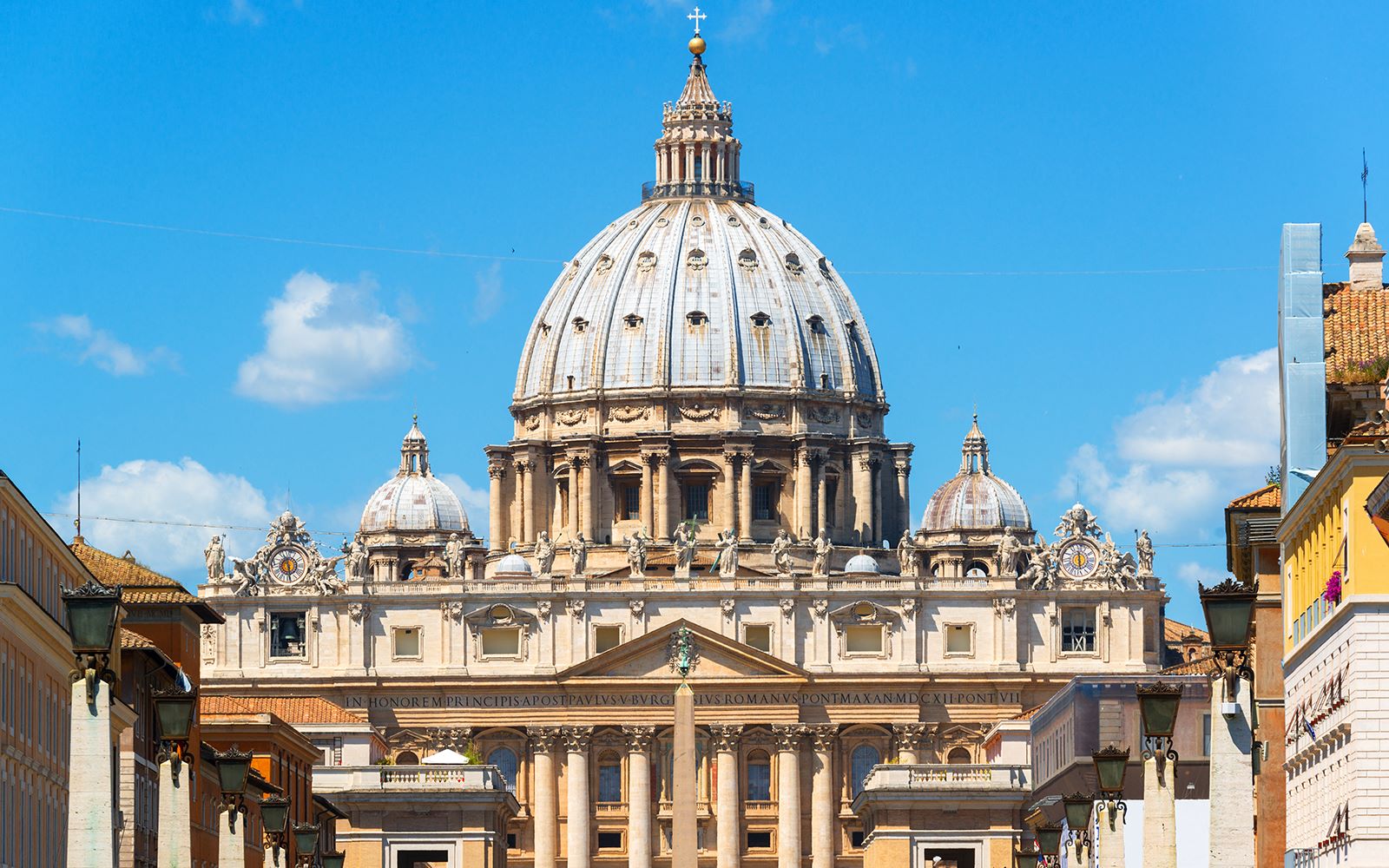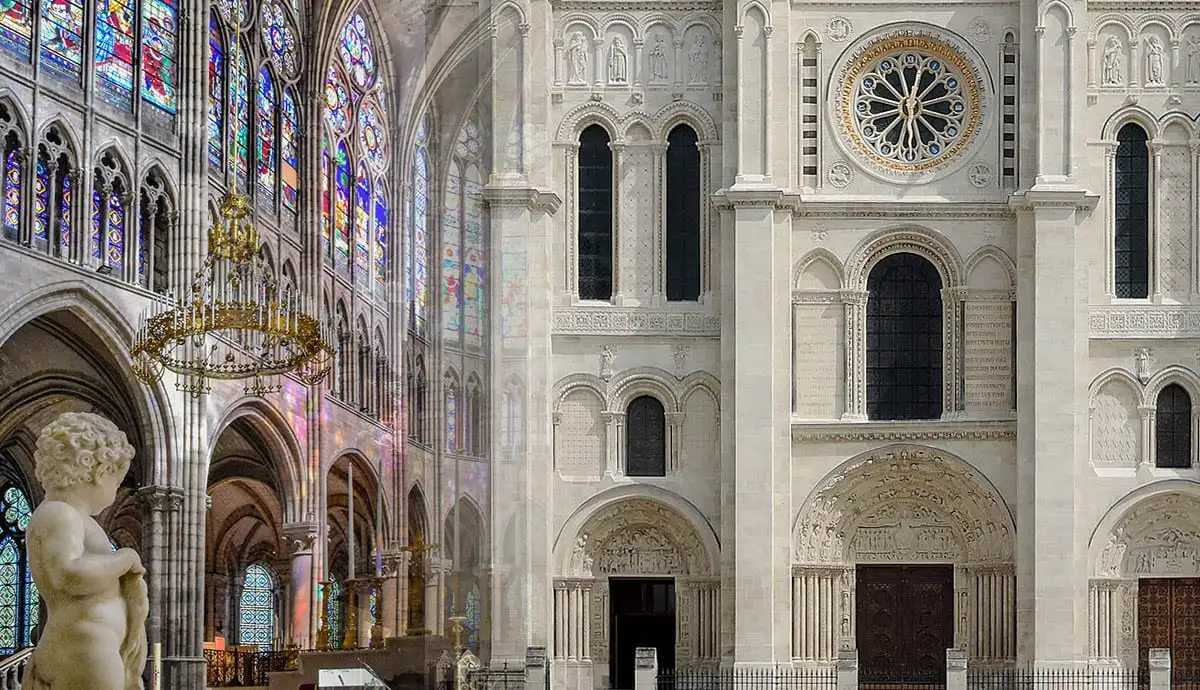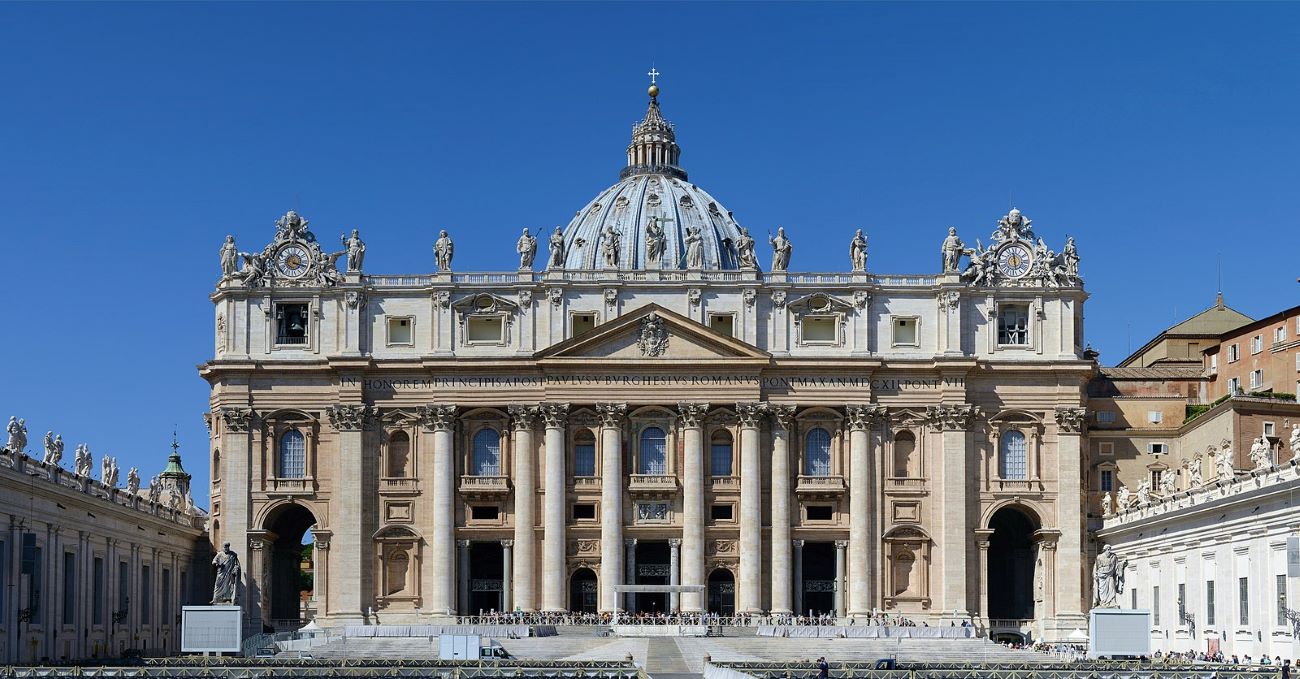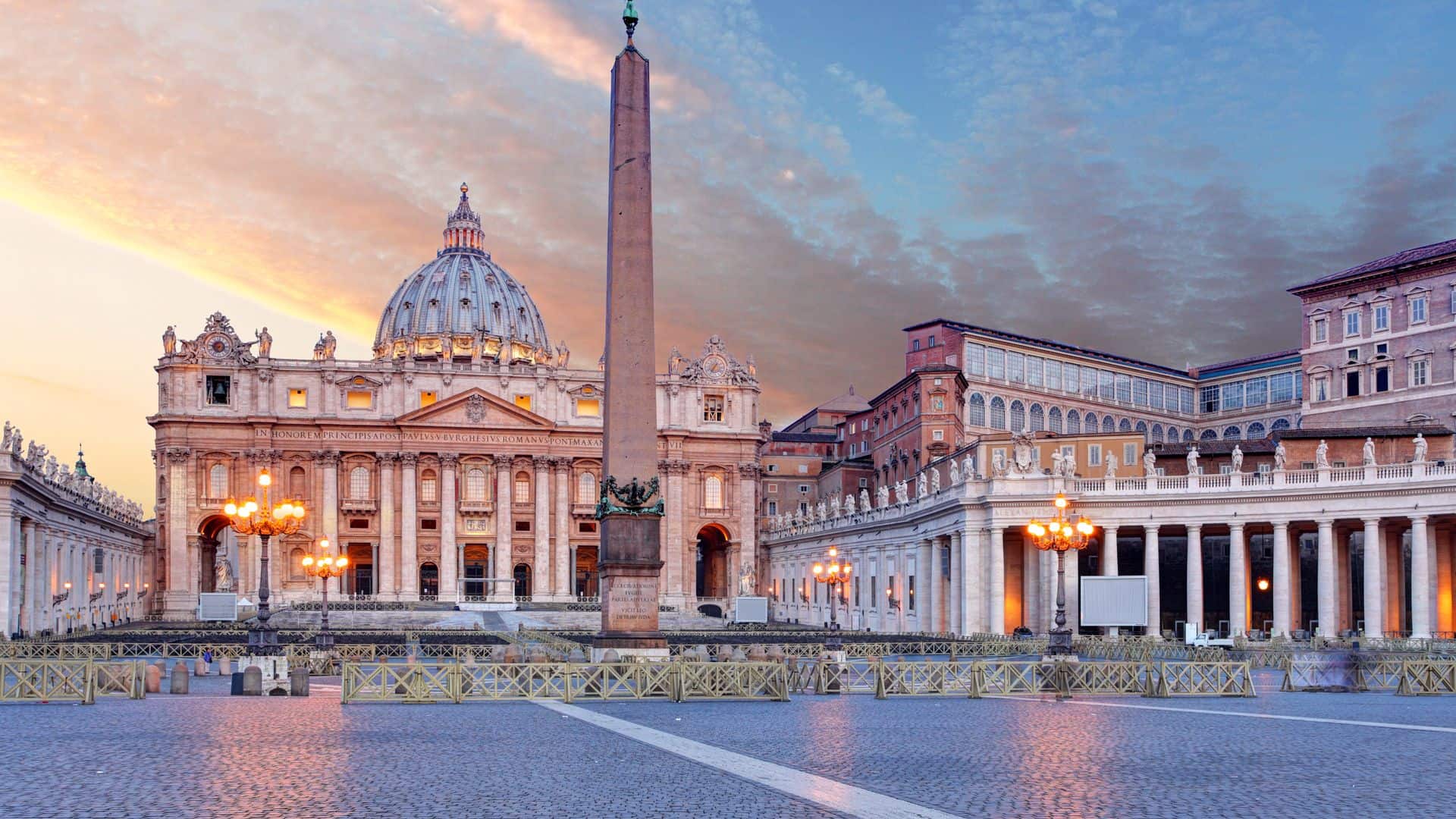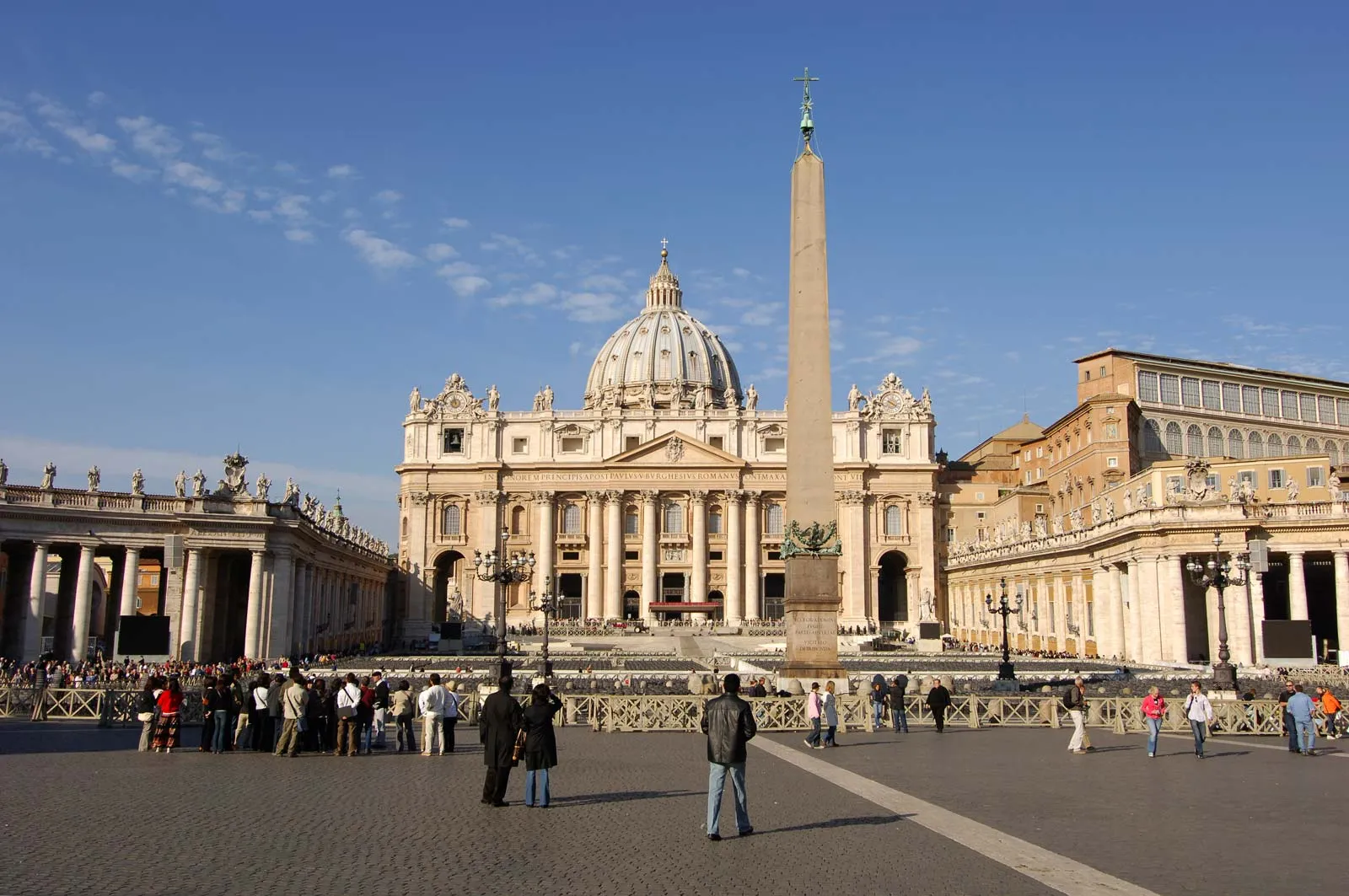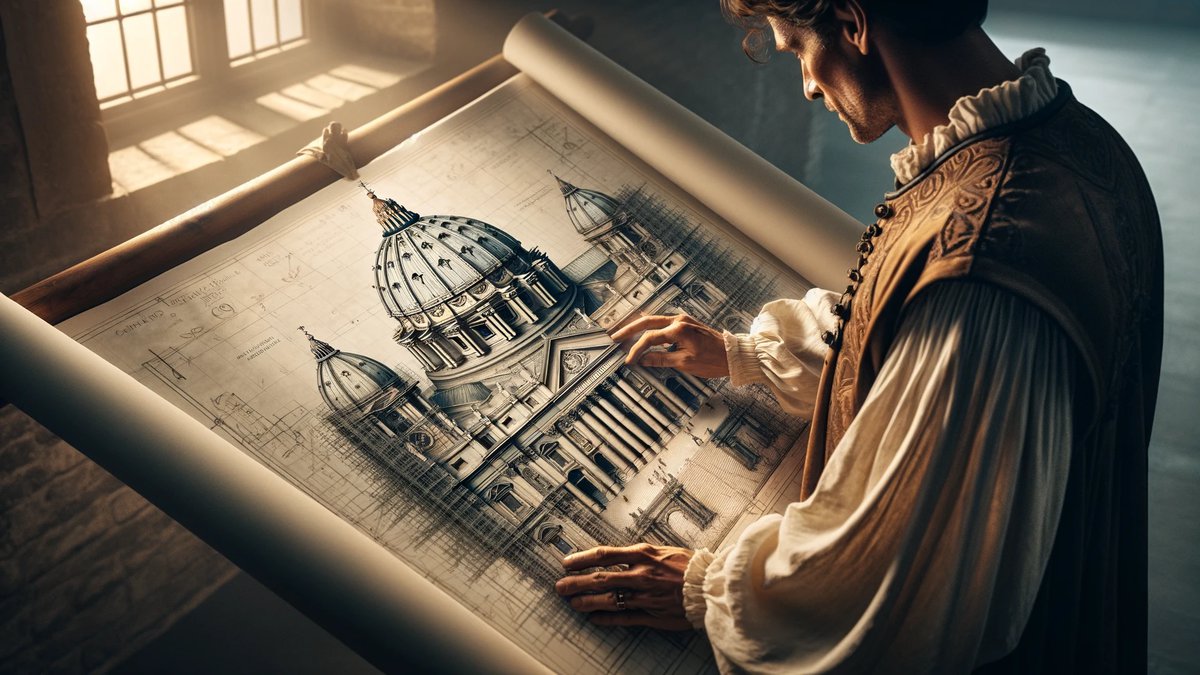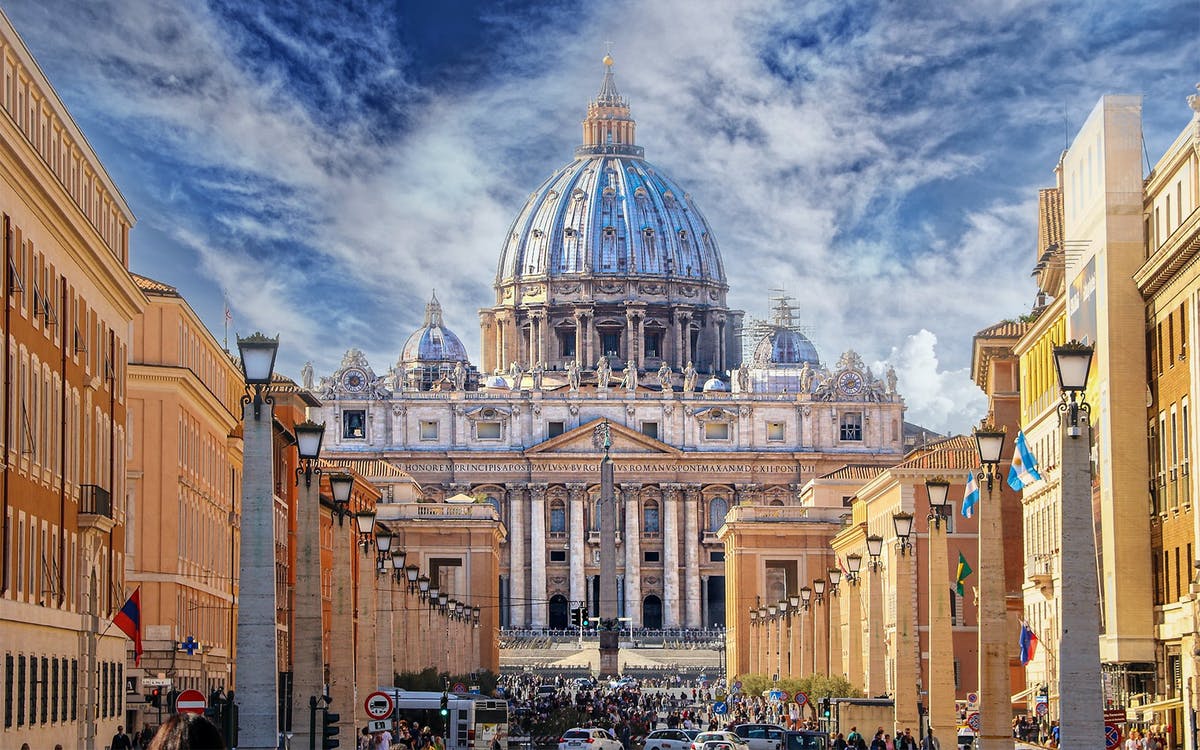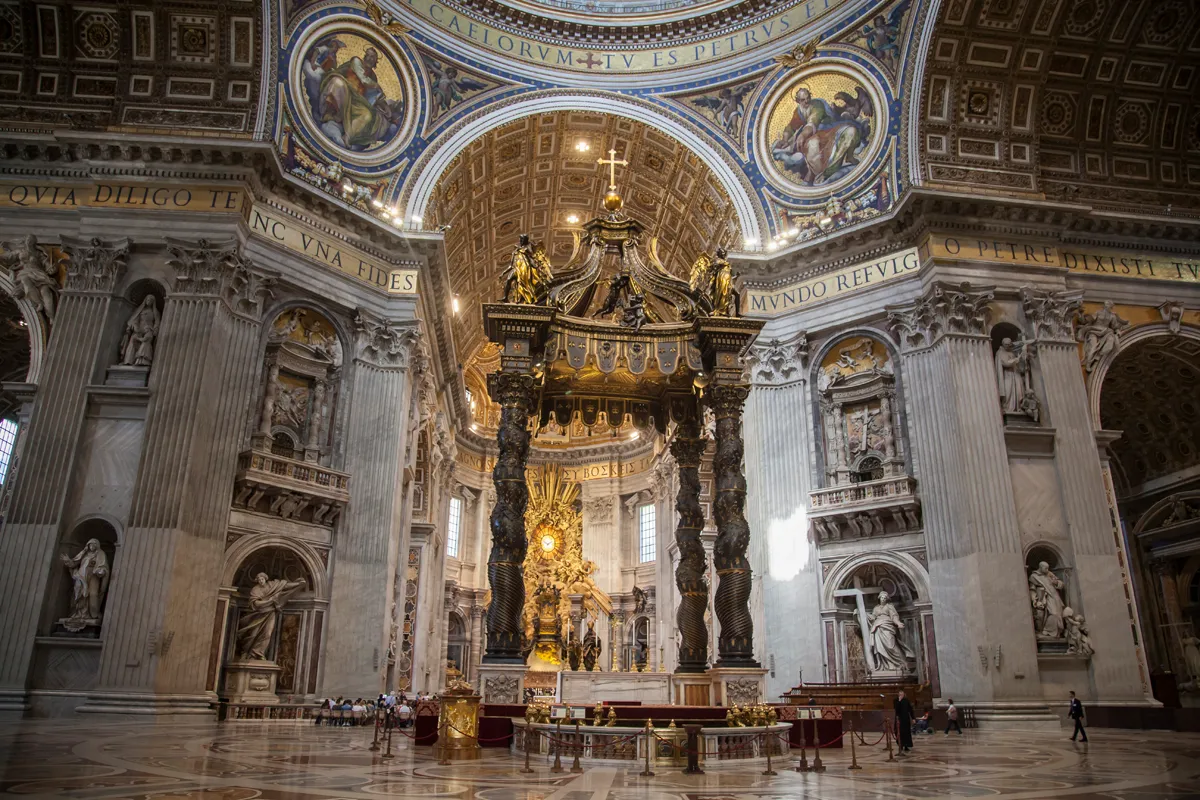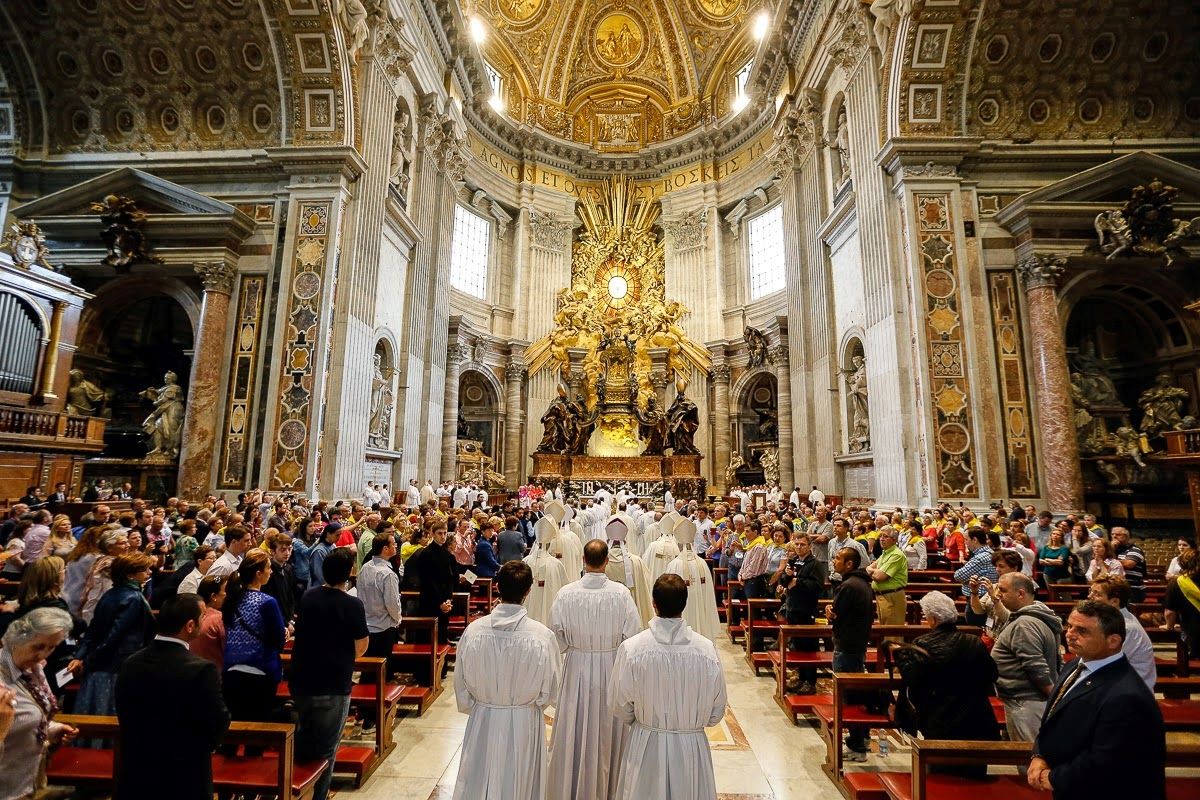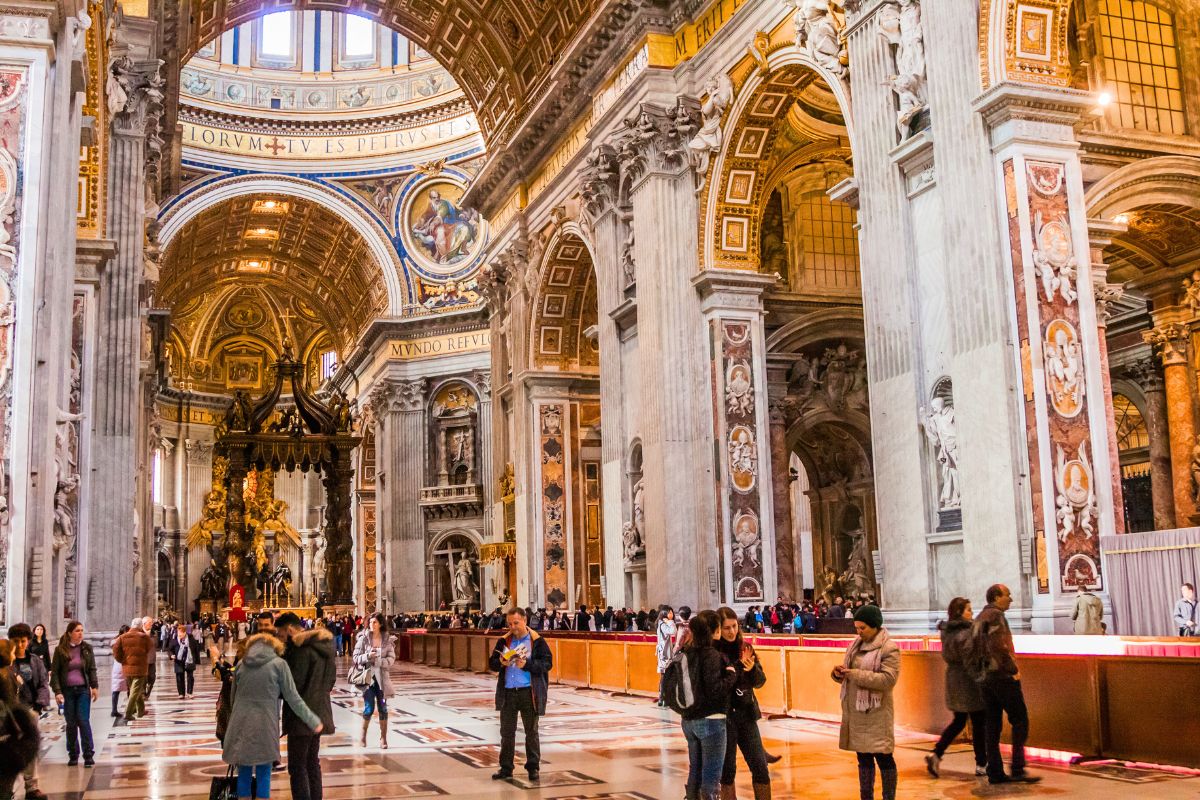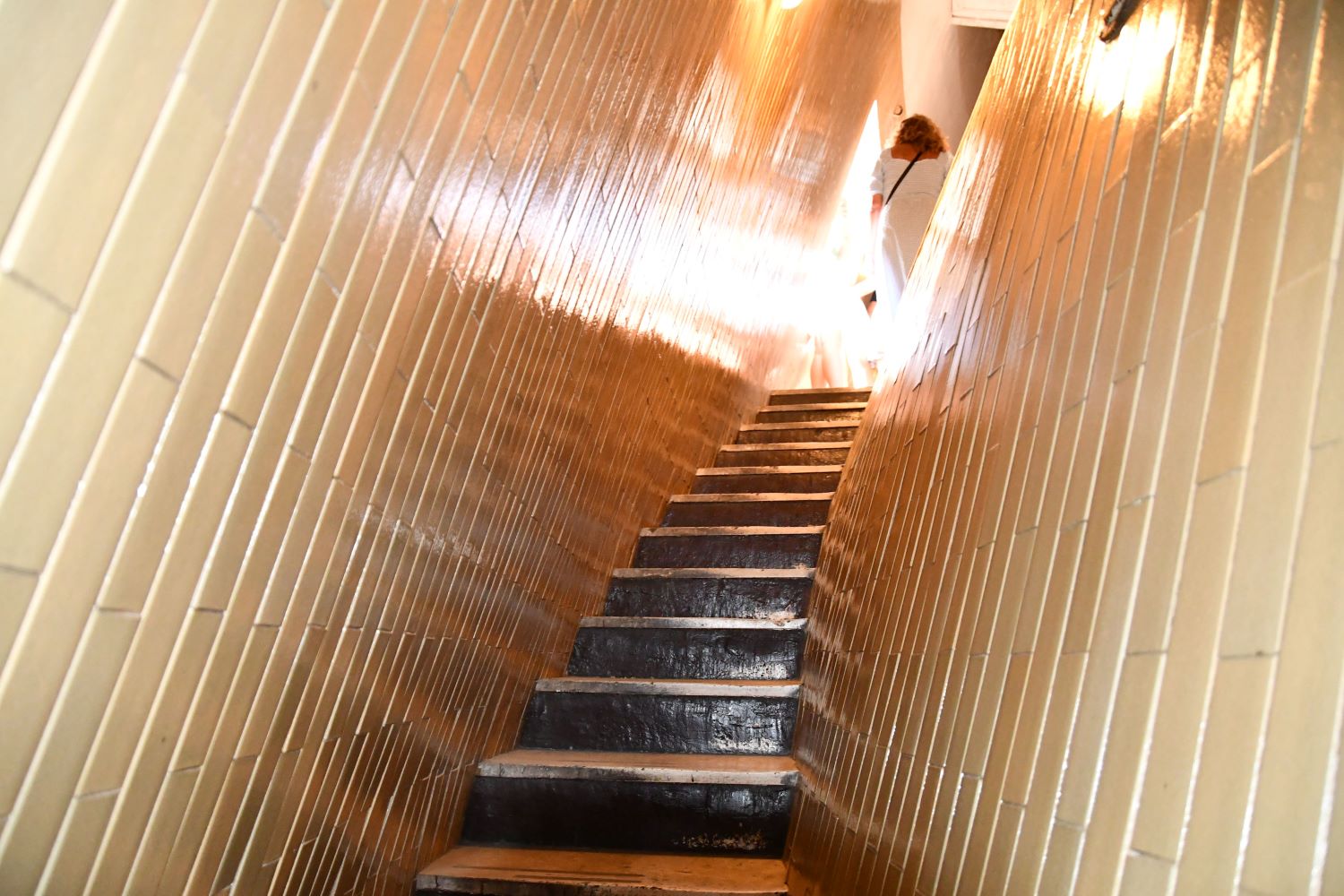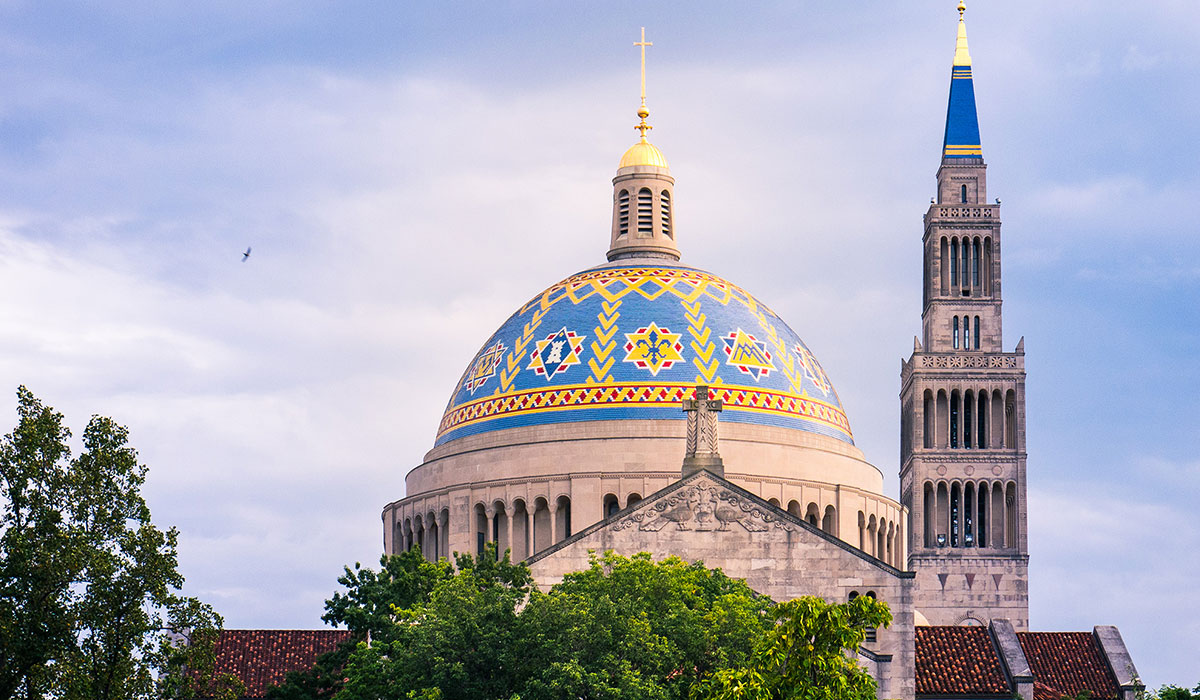Home>Arts and Culture>When Was The St. Peter Basilica Built
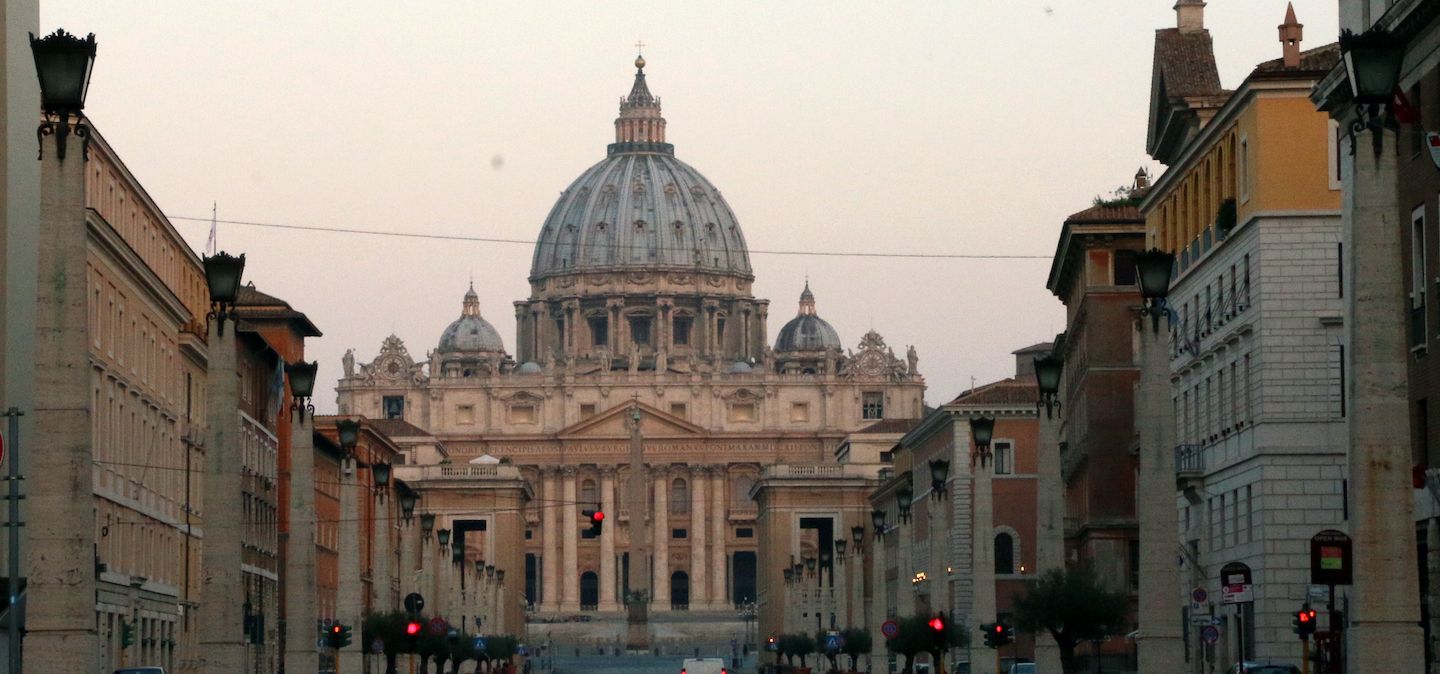

Arts and Culture
When Was The St. Peter Basilica Built
Published: February 10, 2024
Peter Smith, Editorial Director at Christian.net, combines deep insights into faith, politics, and culture to lead content creation that resonates widely. Awarded for his contributions to religious discourse, he previously headed a major organization for religious communicators, enhancing dialogue on faith's societal impacts.
Discover the history of the iconic St. Peter's Basilica, including its construction and architectural significance. Explore the rich arts and culture of this renowned religious site.
(Many of the links in this article redirect to a specific reviewed product. Your purchase of these products through affiliate links helps to generate commission for Christian.net, at no extra cost. Learn more)
Table of Contents
Introduction
St. Peter's Basilica, an architectural masterpiece nestled in the heart of Vatican City, stands as a symbol of grandeur, spirituality, and artistic brilliance. This iconic structure, with its imposing dome and ornate façade, has captivated the hearts and minds of visitors for centuries. As we delve into the history and significance of this awe-inspiring edifice, we will uncover the rich tapestry of art, culture, and religious devotion that defines St. Peter's Basilica.
From the moment one sets foot in St. Peter's Square, the sheer magnitude of the basilica commands attention. The grand colonnades, designed by Gian Lorenzo Bernini, embrace visitors in a welcoming embrace, leading them towards the monumental structure that has witnessed centuries of history unfold within its walls. The basilica's imposing presence serves as a testament to the enduring legacy of the Catholic Church and the artistic prowess of the Renaissance era.
As we embark on a journey through the annals of time, we will unravel the tales of devotion, ambition, and unwavering faith that have shaped the narrative of St. Peter's Basilica. From its humble origins to its current status as a global pilgrimage site, this architectural marvel has stood as a beacon of hope and inspiration for countless individuals across the globe.
Join us as we unravel the captivating saga of St. Peter's Basilica, exploring its early history, the construction of the current basilica, its architectural features, and its profound importance in the realm of art, culture, and spirituality. Let us embark on a virtual pilgrimage to this hallowed site, where history, faith, and artistic brilliance converge to create an experience that transcends time and leaves an indelible mark on all who behold its splendor.
Read more: Why Is St. Peter’s Basilica Important
Early History of St. Peter's Basilica
The origins of St. Peter's Basilica can be traced back to the 4th century when the first church was constructed on the site believed to be the final resting place of Saint Peter, one of the twelve apostles of Jesus Christ. According to historical accounts, Emperor Constantine the Great commissioned the construction of the original basilica, marking it as a significant pilgrimage site for early Christians.
The original basilica, known as Old St. Peter's Basilica, stood as a testament to the burgeoning influence of Christianity in Rome. Its architectural design, characterized by a traditional basilica layout with a nave, aisles, and an apse, reflected the prevailing style of early Christian churches. The basilica's significance was further amplified by the presence of Saint Peter's tomb, which drew pilgrims from far and wide, solidifying its status as a revered religious site.
Throughout the centuries, Old St. Peter's Basilica underwent several renovations and additions, each contributing to its grandeur and spiritual significance. However, as the centuries passed, the need for a more expansive and magnificent structure became apparent, prompting the decision to embark on the ambitious endeavor of constructing a new basilica that would surpass its predecessor in splendor and magnificence.
The early history of St. Peter's Basilica is intertwined with the evolution of Christianity, the rise and fall of empires, and the enduring legacy of Saint Peter himself. The site has witnessed the ebb and flow of history, serving as a steadfast symbol of faith and resilience amidst the ever-changing tides of time.
As we reflect on the early history of St. Peter's Basilica, we are reminded of the profound impact of this sacred site on the course of religious and cultural history. The legacy of the original basilica continues to resonate through the ages, laying the foundation for the awe-inspiring structure that stands today as a testament to the enduring power of faith and the enduring legacy of Saint Peter.
Construction of the Current Basilica
The construction of the current St. Peter's Basilica stands as a monumental achievement in the annals of architectural history, representing the pinnacle of artistic and engineering prowess during the Renaissance era. The ambitious endeavor to erect a new basilica that would surpass its predecessor in grandeur and magnificence was set in motion during the 16th century, under the patronage of Pope Julius II.
The task of designing the new basilica was entrusted to a succession of esteemed architects, including Donato Bramante, Antonio da Sangallo the Younger, and Michelangelo. Each architect brought forth their unique vision and expertise, contributing to the evolution of the basilica's design. The culmination of their efforts resulted in a structure that embodied the ideals of Renaissance architecture, characterized by harmonious proportions, classical elements, and a sense of grandeur befitting its sacred purpose.
One of the most iconic features of the current basilica is its majestic dome, designed by Michelangelo. The dome's soaring height and graceful curvature exemplify the mastery of architectural engineering, serving as a testament to the ingenuity and innovation of the Renaissance architects. The construction of the dome posed a formidable challenge, requiring meticulous planning and technical skill to achieve its awe-inspiring form.
The interior of the basilica boasts a wealth of artistic treasures, including masterpieces by renowned artists such as Michelangelo, Gian Lorenzo Bernini, and Raphael. The ornate decoration of the interior, adorned with intricate mosaics, majestic altars, and awe-inspiring sculptures, reflects the unwavering commitment to creating a space that inspires reverence and awe in all who enter.
The construction of the current St. Peter's Basilica spanned over a century, bearing witness to the dedication and perseverance of countless artisans, craftsmen, and laborers who contributed to its realization. The basilica's completion in the 17th century marked the culmination of a monumental undertaking that had reshaped the skyline of Rome and left an indelible mark on the world of architecture.
As we marvel at the splendor of the current basilica, we are reminded of the enduring legacy of human creativity and devotion that has transcended the passage of time. The construction of St. Peter's Basilica stands as a testament to the unyielding spirit of artistic innovation and the profound impact of architectural excellence on the cultural landscape of the world.
Architectural Features of St. Peter's Basilica
The architectural features of St. Peter's Basilica are a testament to the ingenuity, artistic brilliance, and technical mastery of the architects and artisans who contributed to its creation. From its imposing façade to the soaring dome that graces the Roman skyline, every aspect of the basilica's design reflects a harmonious blend of classical aesthetics and spiritual symbolism.
The Basilica's Façade:
The grand façade of St. Peter's Basilica, adorned with colossal columns, intricate carvings, and majestic statues, exudes a sense of grandeur and magnificence. The central balcony, known as the Loggia of Benedictions, serves as the iconic backdrop for the Pope's public appearances, adding a layer of historical and religious significance to the basilica's exterior.
The Dome:
The crowning jewel of St. Peter's Basilica is its awe-inspiring dome, designed by Michelangelo and later completed by Giacomo della Porta. The dome's graceful curvature and towering height symbolize the aspirations of the human spirit reaching towards the divine. Its interior is adorned with breathtaking mosaics depicting the heavenly realms, inviting visitors to gaze upwards in awe and contemplation.
The Nave and Aisles:
Upon entering the basilica, visitors are greeted by the vast expanse of the nave, flanked by majestic aisles adorned with ornate chapels and sacred relics. The architectural layout, characterized by a sense of spatial grandeur and symmetry, creates a profound sense of reverence and awe, guiding visitors towards the focal point of the high altar and the monumental baldachin crafted by Gian Lorenzo Bernini.
The Pieta and Other Sculptures:
The interior of St. Peter's Basilica is adorned with exquisite sculptures, including Michelangelo's renowned Pieta, which stands as a testament to the transcendent beauty of Renaissance art. The lifelike forms and emotional depth captured in these sculptures evoke a profound sense of spiritual contemplation, inviting visitors to engage with the divine through the language of art.
The Baldachin and High Altar:
The centerpiece of the basilica's interior is the monumental baldachin, a towering canopy crafted by Gian Lorenzo Bernini to enshrine the high altar and the revered tomb of Saint Peter. The intricate spiral columns and ornate embellishments of the baldachin exemplify the Baroque aesthetic, infusing the sacred space with a sense of dynamic movement and spiritual exaltation.
In essence, the architectural features of St. Peter's Basilica transcend mere structural elements; they embody the collective aspirations of humanity towards the divine, the enduring legacy of artistic genius, and the profound spiritual significance of this hallowed site. Each architectural detail, from the façade to the interior adornments, serves as a testament to the enduring power of art and faith to inspire, uplift, and transcend the boundaries of time and space.
Importance and Significance of St. Peter's Basilica
St. Peter's Basilica stands as a profound symbol of religious devotion, artistic brilliance, and historical significance, holding a revered position as the spiritual epicenter of the Catholic Church and a global icon of cultural heritage. Its importance transcends mere architectural grandeur, encompassing a myriad of dimensions that resonate deeply with pilgrims, art enthusiasts, and historians alike.
At its core, the basilica serves as a tangible link to the origins of Christianity, encapsulating the enduring legacy of Saint Peter, the apostle chosen by Jesus to lead his church. The site, believed to enshrine the tomb of Saint Peter, holds immense religious significance, drawing millions of pilgrims and believers who seek solace, inspiration, and spiritual renewal within its hallowed confines. The basilica's role as a place of pilgrimage and prayer underscores its profound impact on the lives of countless individuals who find solace and strength in its sacred embrace.
From an artistic and architectural standpoint, St. Peter's Basilica stands as a testament to the unparalleled creativity and ingenuity of the Renaissance era. The collaborative efforts of esteemed artists, architects, and craftsmen have endowed the basilica with a wealth of artistic treasures, including masterpieces by Michelangelo, Gian Lorenzo Bernini, and countless others. The fusion of artistic expression and religious devotion within the basilica's walls creates an immersive experience that transcends mere aesthetic appreciation, inviting visitors to engage with the divine through the language of art.
Furthermore, the basilica's historical significance is deeply intertwined with the evolution of the Catholic Church and the broader narrative of Western civilization. It has borne witness to pivotal moments in history, from the coronations of popes to the grand ceremonies that have shaped the course of religious and political events. The basilica's role as a symbol of papal authority and the seat of the Catholic Church underscores its enduring impact on the global stage, serving as a tangible embodiment of the church's spiritual and temporal authority.
In essence, St. Peter's Basilica stands as a living testament to the convergence of faith, art, and history, weaving together a tapestry of human endeavor and spiritual aspiration. Its enduring importance and significance resonate across continents and centuries, transcending the boundaries of time and space to inspire awe, reverence, and contemplation in all who behold its majestic splendor.
